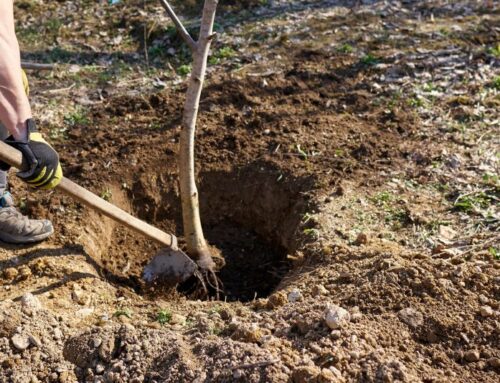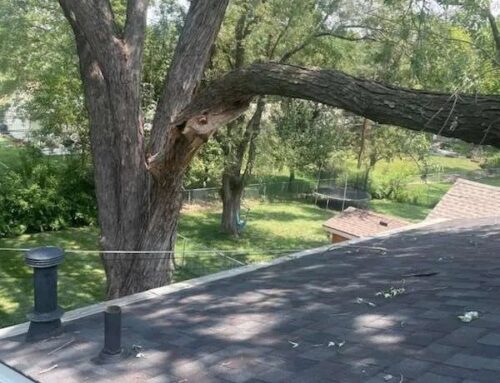When it comes to tree care and landscaping, the words “wood chips” and “mulch” are often thrown around interchangeably, but they’re not quite the same thing. If you’ve ever wandered through a garden center or a well-manicured yard, you’ve definitely seen mulch. But questions remain—what’s the best way to use it? Is it actually good for your trees? And what type of mulch is best? Let’s clear up the confusion about wood chips and mulch!
What is mulch?
Mulch is any material that is spread or laid over the surface of the soil as a covering. Its main purpose is to help retain soil moisture, suppress weeds, regulate soil temperature, and make the garden bed look more attractive. But not all mulch is created equal! There are two main types: organic and inorganic.
Organic Mulch: This type of mulch is made from once-living materials. It breaks down over time, fertilizing the soil as it decomposes. Examples include:
- Wood chips and shredded bark: Often a byproduct of tree trimming or pruning.
- Leaves and compost: Decomposed organic matter packed with nutrients.
- Straw and grass clippings: Great for vegetable gardens but must be free of pesticides.
Inorganic Mulch: These are materials that don’t decompose (or do so very slowly). Examples include:
- Rocks and gravel: Long-lasting and good for preventing soil erosion.
- Plastic sheeting and landscape fabric: Moderately long-lasting weed barriers but can hinder water and air movement.
- Rubber mulch: Made from recycled tires, durable but doesn’t improve soil health.
How is wood mulch made?
Wood mulch is typically produced as a byproduct of tree trimming, pruning, or removals. When tree branches or entire trees are cut down, they are fed through a chipper, resulting in shredded wood pieces known as wood chips. These chips can be used directly as mulch, which is why you might also hear the term arbor mulch when referring to this type of product—it’s made from trees, plain and simple.
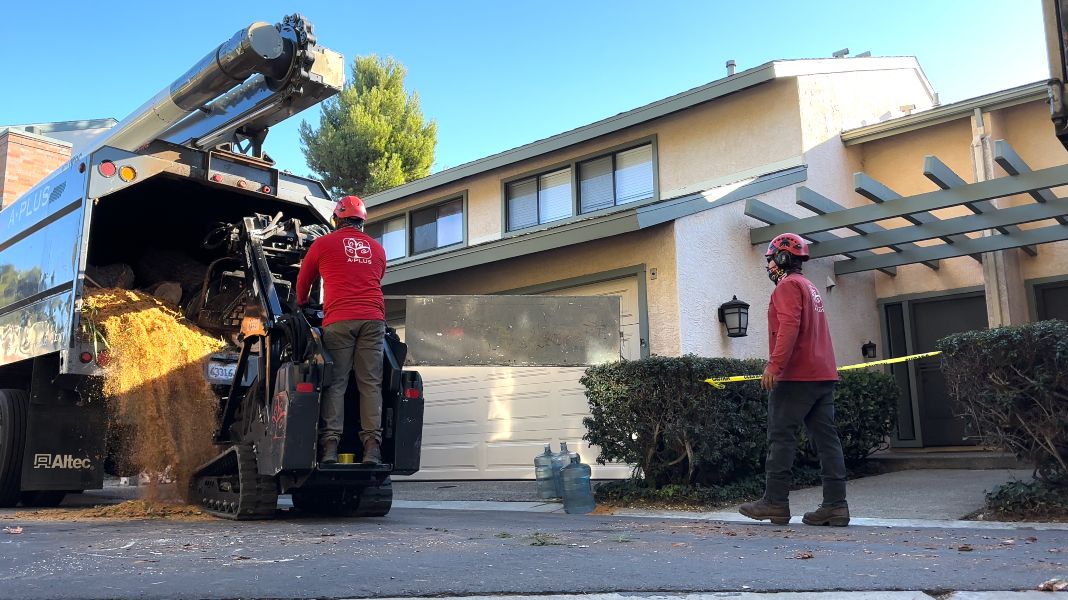
This type of mulch is highly sustainable because it repurposes waste material from tree care operations. Instead of letting branches decompose in a landfill, they’re recycled into a valuable landscaping product that benefits the environment.
What’s the difference between wood mulch and wood chips?
This is where things get a little confusing. Wood mulch and wood chips are closely related but not quite the same thing. Here’s the breakdown:
- Wood Chips: These are the raw, chipped pieces of wood that come straight from the chipper during tree care operations. They’re typically irregular in shape and size, containing both bark and wood.
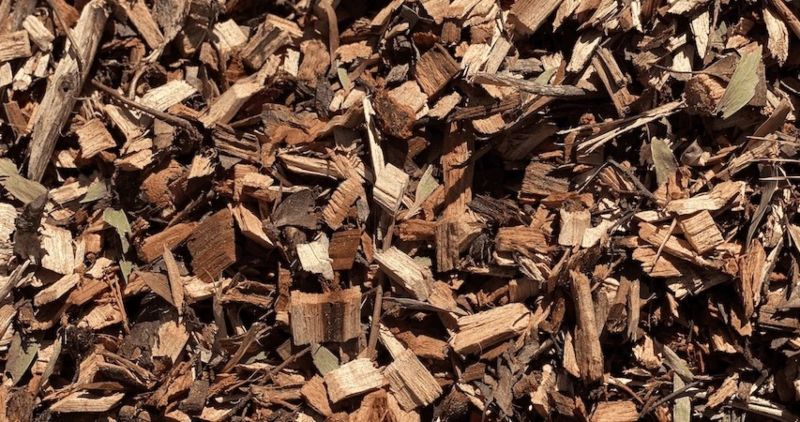
- Wood Mulch: This is when those wood chips are specifically used as a mulch material to cover the soil. Sometimes, wood chips are further processed to create a more uniform appearance or dyed for aesthetic purposes.
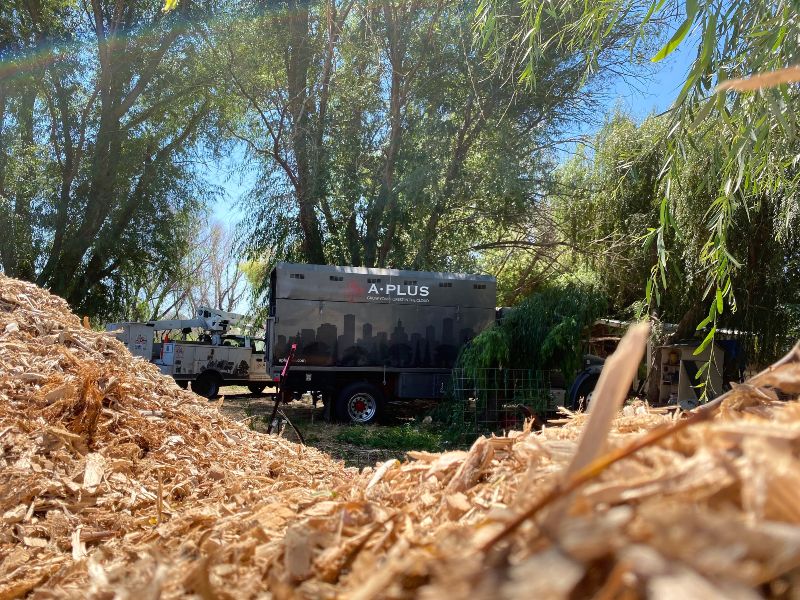
In short, wood chips become wood mulch when used in a landscaping context, but they’re just wood chips until then!
Why is it called “organic mulch”?
The term “organic” can be misleading. In the context of mulch, “organic” doesn’t mean USDA Certified Organic like your grocery produce. Instead, it refers to any material that comes from something that was once living. This includes wood chips, shredded bark, leaves, straw, and compost.
The reason organic mulch matters and is so beneficial is due to its ability to decompose. As it breaks down, it adds valuable nutrients to the soil, improving soil structure, fertility, and even microbial activity. This natural decomposition process feeds your plants over time and enhances the overall health of your garden ecosystem.
On the flip side, because organic mulch breaks down, it does require replenishing. Depending on the type of mulch and the climate, you may need to add a fresh layer every year or two to maintain its effectiveness.
Header 2: Unveiling the Distinctions: Wood Chips vs Mulch
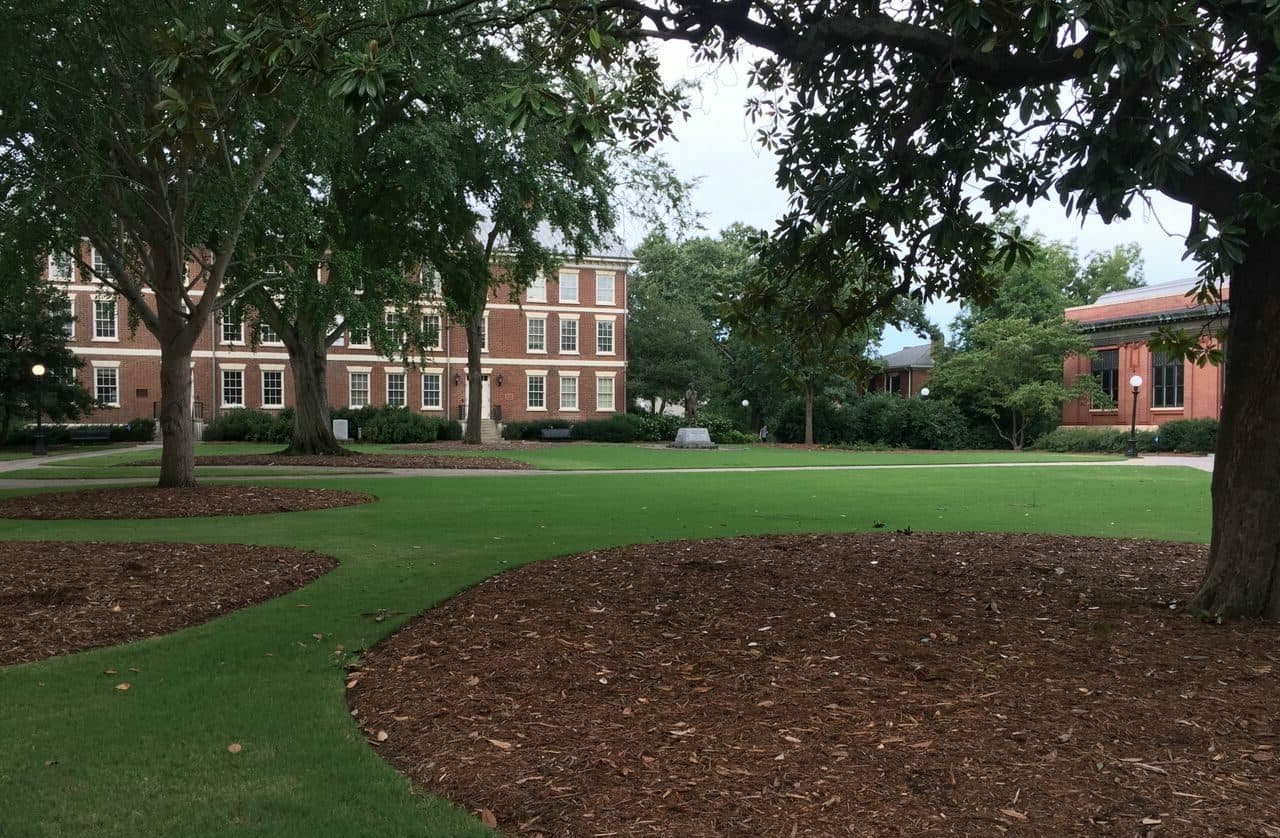
Thinking about adding mulch to your landscape? Here are some helpful tips, facts, and questions to guide your decision-making process.
Tips for Effective Use
- Layer Depth: Apply a layer that’s 2 to 4 inches thick around trees and plants. Too thin won’t suppress weeds, while too thick can suffocate roots.
- Keep It Away from Trunks: Avoid piling mulch against tree trunks, known as “volcano mulching.” This can trap moisture, leading to decay and pest problems. Keep mulch a few inches away from the base.
- Replenish as Needed: Organic mulch breaks down over time. Replenish it annually or as needed to maintain a consistent depth.
Facts to Consider
- Mulch Retains Moisture: It reduces water evaporation from the soil, which means less frequent watering.
- Temperature Regulation: Mulch keeps soil cooler in the summer and insulates it during winter.
- Weed Suppression: By blocking sunlight, mulch prevents weed seeds from germinating.
- Soil Improvement: Organic mulch enriches the soil as it decomposes, enhancing nutrient availability.
Worried about common mulch myths? You might have heard that mulch robs soil of nitrogen, changes soil pH, or attracts rodents. Most of these concerns are overblown or depend on specific circumstances. Check out our Mulch Myths and Truths for more information.
Questions for Decision-Making
- Do you want organic or inorganic mulch?
a. Organic mulch provides more soil benefits but requires periodic replenishing.
b. Inorganic mulch lasts longer but doesn’t enrich the soil. - If organic, what kind of mulch do you want?
a. Wood chips: Great for trees and shrubs.
b. Leaves or leaf mold: Excellent for flower beds and vegetable gardens.
c. Straw: Ideal for vegetable gardens but needs to be pesticide-free.
d. Bark: Attractive and slow to decompose. - If wood mulch, do you want natural or colored?
a. Natural Wood Mulch: Made from untreated wood, it’s cheaper and chemical-free.
b. Colored Mulch: Provides a manicured look but may contain dyes and chemicals.
c. Pro Tip: Apply natural wood mulch as a base layer and top with a thin layer of colored mulch. This saves money, improves soil health, and keeps a polished appearance.
Whether you’re looking to improve soil health, save water, or simply beautify your yard, mulch is one of the best things you can give your tree. Still unsure about which mulch to use or how to apply mulch? Contact our tree care experts today for personalized recommendations! Happy mulching!


